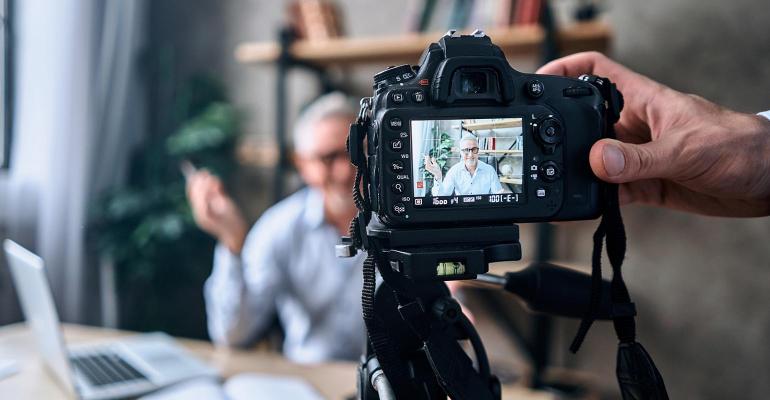Presenting on camera isn’t always easy. Sure, the final product may look effortless; however, getting to that point can be a frustrating process of trial and error. With nearly 500 YouTube videos, we’re no strangers to being on camera.
Here are seven tips we’ve learned over the years to help your films:
1. Deviate From the Script—Sometimes what’s written on paper doesn’t sound right when you’re speaking. Also, trying to remember every single word in a script is hard. It’s OK to paraphrase or say something that’s more in tune with how you speak, as long as you’re making the same point. Don’t memorize, but don't totally wing it. Your goal is to find a nice middle ground.
2. Break It Up—Recording everything in one take is nearly impossible and puts unnecessary strain on the presenter. This is where a great editor makes all the difference. Present a few lines, take a breath, review your notes, then say a few more. A good editor can fill in the gaps with B-roll, callouts, etc.
3. Hold Your Endings—After you record a segment and plan to take a pause—don’t immediately look away from the camera. Instead, finish your statement and hold your facial expression for a three-count. Why? Your editing team will have a hard time piecing your clips together if you immediately look away and change expressions—it won’t look natural and takes away from the flow of the film. This tip is a subtle one, but your editing team will love you for it. By taking some extra pauses, you give your editing team the time and flexibility to include transitions, call-outs or other elements that would be harder to implement if you spoke continuously.
4. Use Natural Eye Contact—Treat the camera lens like a live person in front of you. You don’t have to stare it down but you also don’t have to avoid eye contact with it altogether. Your goal is for your video to feel like a natural conversation. It’s OK to look away from the camera lens at times and come back to it when you want to emphasize a key point. For those important moments, you should slow down and look directly at the camera lens. When used properly, your audience will feel connected to your message.
5. Dial Up Your Energy—Even if the content is great, no one wants to listen to a boring, monotone presenter who doesn’t appear to be passionate about the topic. Dial up the energy by 20%. Not feeling like presenting that day? Do some jumping jacks, listen to a motivational song–make an effort to put yourself in the mood! Your energy should permeate the screen.
6. Turn the Camera on in Advance—Outtakes and behind-the-scenes clips can bring your final film to life and give your video more personality. Our advice? Turn the camera on and let it roll before you are delivering your actual content message. You never know what funny gems may appear and a good editor can weave those moments seamlessly.
7. Remember to Blink—While this might seem obvious, it’s not always the case. At times, we can become mesmerized by the camera lens. We stare into the abyss and some natural body functions like moving our hands or even blinking just stop. Sometimes it takes a conscious effort to continue those movements and that’s OK.
There’s no medium more humanizing than video. That said, there is a big difference between the financial advisors who do it well and those who don’t. Hopefully, the tips above help you level up your delivery.
Kevin Nichols is a partner with The Oechsli Institute, a firm that specializes in research and training for the financial services industry. @KevinANichols www.oechsli.com





